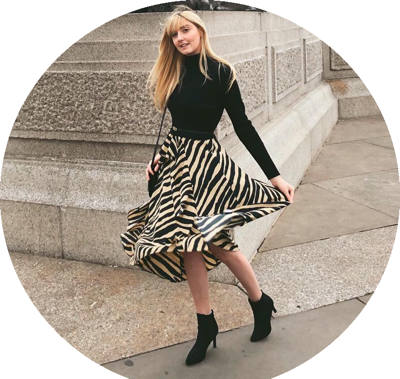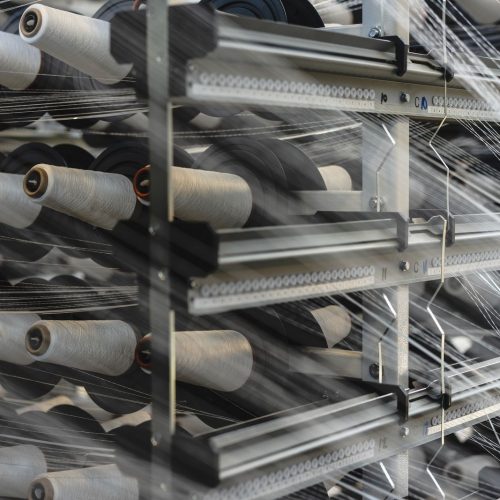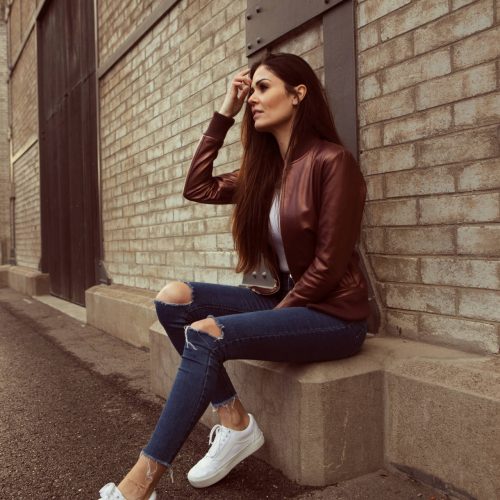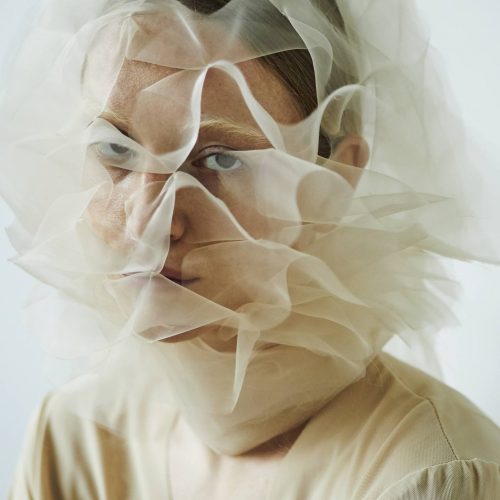What Are Chanel’s Sustainable Goals?
In 2018 when Chanel banned fur, Bruno Pavlovsky claimed “we did it because it’s in the air.” Well, in 2020 that air has turned into a thick fog; the issue of sustainability is almost inescapable for the fashion industry, and so, in 2020 we were presented with the Chanel Mission 1.5°. We will be looking at this two year timeline of Chanel’s sustainable journey and what their goals for a more sustainable future are.
Chanel is a French fashion house that produces high-end womenswear as well as ready-to-wear, cosmetics, luxury goods and accessories. However, Chanel has become more than just a brand, it’s an institution - a leader of the luxury world. When Chanel starts making changes towards sustainability the rest of the market listens. So, we’re very interested in what they have to say.
CHANEL’S SUSTAINABLE JOURNEY
In 2018, as part of Chanel’s first sustainability report, the brand announced they were banning fur and other exotic skins, including crocodile, lizard and snake. A spokeswoman told CNN; “ at Chanel, we are continually reviewing our supply chains to ensure they meet our expectations of integrity and traceability. In this context, it is our experience that it is becoming increasingly difficult to source exotic skins which match our ethical standards.” This was an industry-wide shift, it became the ‘first rule’ of going sustainable; Prada, Burberry, Gucci, Versace and Coach also banned fur at a similar time. But, the spokeswoman for Chanel also said this ban is “an opportunity to create a new generation of high-end products” - this is whats important, not just the banning of unethical practises but finding new, sustainable ones. Luxury can still be luxury however, it will be something new. Bruno Pavlovsky, president of Chanel fashion, agrees with that statement, adding that Chanel “would focus its environmental efforts on the research and development of materials and leathers generated by agri-food industries.”
This leads to Chanel’s recent investments in companies that are working to find sustainable alternatives. Firstly, there is Sulapac - a Finnish start up company who create bio-degradable and micro-plastic free materials from wood chips and natural binders as plastic alternatives. In 2018, Chanel became their first cosmetic investor. With the joining of Chanel, Suvi Haimi, CEO celebrated that “Chanel is definitely one of the forerunners in the luxury segment as they want to invest on latest sustainable material and technology innovations our mission to save this world from plastic waste has just become a big step closer.” Then, in 2019 Chanel invested in Evolved By Nature, a green chemistry company that has created a silk-based alternative to the toxic chemicals used in manufacturing called Activated-Silk. It’s mission is to, “build a more bioharmonious* relationship between people, the things we love and the world we live in” and now, Chanel is part of that mission.
Even though Chanel are not producing sustainable fashion they are supporting the companies that are making sustainability possible; they are part of the change because they are funding the change. However, we would love to start seeing these innovative materials on the runway, replacing toxic materials in the brand.
Also in 2019, Chanel brought a stake in two Italian leather goods companies, Renato Corti and Mabi as well as the French clothing manufacturer, Grandis. This comes as part of their effort to localise and control more of their supply chain. However, the sustainability headline for 2019 was in September when Chanel joined 30% of the fashion industry in signing the Sustainability Pact with Kering (owner of Gucci and Saint Laurent), commenting that the pact was a “historic move”. The goals of the pact are to reach net-zero carbon emission by 2050, achieve 100% renewable energy by 2030 - with extra incentives to make their suppliers do the same - eliminate single use plastic by 2030 and to support innovations and approaches in eliminating micro-fibre pollution and regenerating agriculture programs. Chanel has agreed to all of these by signing the pact and must present a report every year.
Now we get to the main event, in March 2020 Chanel Mission 1.5° was released, this report is Chanel taking charge, building their own goals and making a definitive statement on their sustainable journey. Andrea d’Avack, the chief sustainability officer for Chanel, explained that “CHANEL Mission 1.5° is embedded in our long- term vision, and reflects our ambitions to play our part in facing humanity’s biggest challenge and enroll the future of our company in a more sustainable world.” The report is in line with the 2015 Paris Climate Agreement, referencing the aim of reducing mean global temperature rise to 1.5°C. D’Avack also commented that “we’re not just setting targets of what we are able to do, but targets that have been imposed on us [by the Paris climate agreement]”, with this report Chanel is stepping out of their comfort zone to push themselves further.
The report details four actions that Chanel plans to take over the next decade, all to fight climate change. The first, reducing carbon footprint across all operations and supply chain, “reduce emissions across CHANEL operations by 50% by 2030.” Also, shifting to global 100% renewable energy by 2025, balancing their residual carbon emissions which they explained as an effort to “protect and restore forests, mangroves and peatlands” and finally, supporting vulnerable communities, farmers and entrepreneurs in their supply chain.
WHAT DO THESE GOALS MEAN FOR CHANEL?
Chanel have called this their ‘journey’, D’Avack explains that these goals “mean that we have to transform our whole value chain, the way in which we source, produce, distribute to the retailers and merchandisers – our product. It demands resources, dedication and the involvement of pretty much everybody in the company.” This statement is more encouraging than the report itself. Many points in the report have phrases such as “support” which are open ended and depend on how far Chanel wants to take it. There are a lot of possibilities in their goals and this statement reassures us they do want to do as much as it takes.
Also, Chanel has plans to support projects outside of fashion; some to off-set their damage, The Guardian has reported that “a worldwide planting programme could remove two-thirds of all the emissions from human activities that remain in the atmosphere today, a figure the scientists describe as “mind-blowing.’” So, off-setting could be the way forward. It’s great that Chanel want to use their resources outside of the fashion industry to support sustainability on a wider scale.
Many environmental professionals argue the worst pollution often happens in the supply chain, with brands such as Gucci and Saint Laurent finding that 90% of their pollution happens very early in the supply chain. So, it’s understandable and necessary that Chanel is, mostly, focusing their sustainable goals on their supply chain. However, one thing that wasn’t mentioned is when or if sustainable alternatives will replace toxic materials and packaging in the brand. We can only hope this is one of the possibilities that come about from their research into raw materials.
So, are these the goals we expect the leader of the luxury market to be making? In part, yes. In 2018, The United Nations agency labelled the environmental damage of the fashion an emergency and this is Chanel coming to terms with their sustainable responsibility. Overall, we would call Chanel’s sustainable goals very promising, of course it’s all about what they achieve through those goals over the next years.
Discover Last Chanel Collection AW 2020-21





